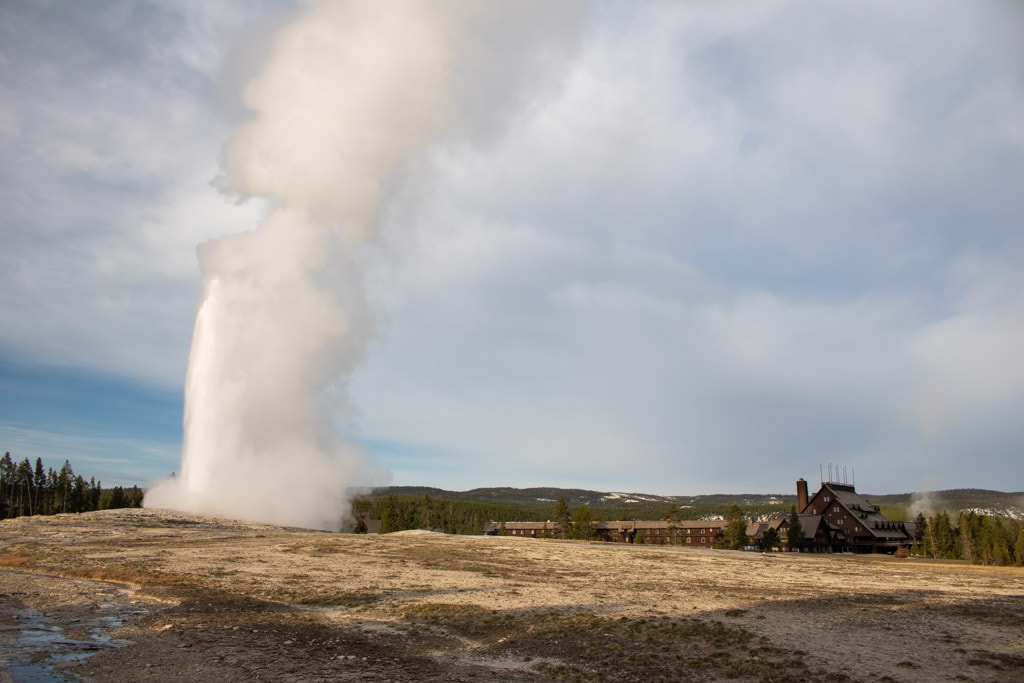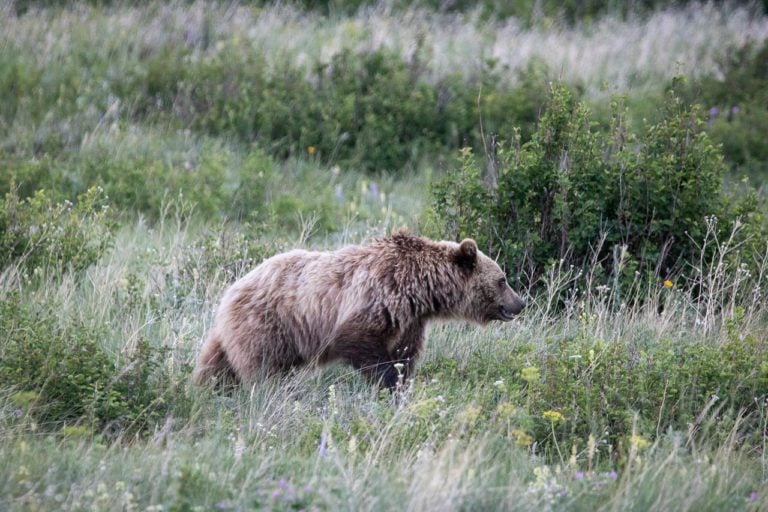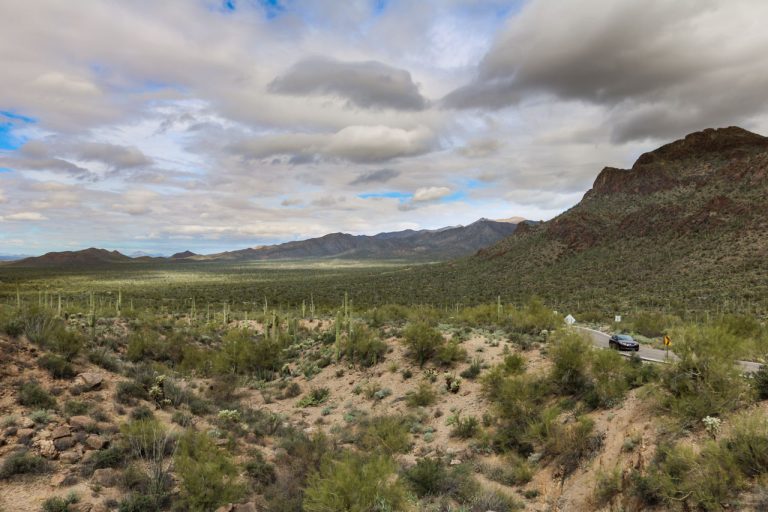5 Main Features of Yellowstone National Park: Geysers, Wildlife, Architecture & More
There’s more than one reason that Yellowstone National Park is such an extremely popular destination. The unique range of features of Yellowstone National Park attracts millions of visitors each year, both Americans and travelers from abroad.
If you’re visiting the world’s first national park for the first time, below are the main features of Yellowstone National Park that you have to see.
There are numerous highlights, some of which are pretty far apart. So, because you’ll need to do some driving to get to every corner of the park, I recommend spending at least five days at Yellowstone. That really is the absolute minimum amount of time you need to scratch to surface of what Yellowstone National Park has to offer.
5 Main Features of Yellowstone National Park
While a significant percentage of visitors only visit famous Yellowstone places like Old Faithful, the Grand Canyon of the Yellowstone and Grand Prismatic Spring, there is so much more to see and do here.
It’d be a real shame to miss out on some of the top features of Yellowstone National Park, simply because you focus only on the park’s world-famous locations.
Spend some more time away from the busiest places and you’ll find completely different Yellowstone National Park experiences. Pristine places like Blacktail Plateau, Lamar Valley and the southeast—just to name a few—can be amazingly unspoiled, sometimes surprisingly quiet and, above all, exceptionally diverse.
Exploring all main Yellowstone National Park features will only make your trip better. The overview below contains the features of Yellowstone National Park you simply must see, from the popular and crowded spots to remote and relatively quiet locations.
This post about the main features of Yellowstone National Park contains affiliate links. You can read more about our Terms of Use / Disclosure here.
When to Visit the Top Yellowstone National Park Highlights?
I do have to say, however, that avoiding the crowds in Yellowstone National Park can be a challenge in the peak summer season. June through August sees the vast majority of annual visitors to the park. You can get away from the bustling crowds by going on longer hikes, but nearly all roadside attractions will be extremely busy.
Therefore, I recommend visiting Yellowstone in May, September or October, which are significantly quieter. Those months also offering some of the best wildlife viewing in Yellowstone, from calves and cubs in spring to the bison and elk rut in fall.
Still, make sure to reserve your accommodation(s) well in advance, even in the shoulder seasons.
1. Hot Springs


Yellowstone’s sprawling hydrothermal areas are home to numerous features, such as steam vents, pots of bubbling mud, geysers (see more about those below) and hot springs.
In fact, hot springs are the most common hydrothermal features in Yellowstone National Park.
The water in a hot spring starts as precipitation, which slowly seeps through bedrock underneath Yellowstone. After becoming superheated way down below the surface, it rises back up through an open plumbing system in the rocks. The water is continuously circulated through convention, which prevents it from erupting like a geyser.
Sometimes, however, a hot spring can actually shoot boiling water into the air, as Crested Pool does. Usually, hot springs are simply clear pools of scorching hot water, exhibiting all kinds of colors created by so-called thermophiles.
It’s those thermophiles, or heat-loving micro-organisms, that provide the vibrant colors Yellowstone’s hot springs are known for. The colors you see are actually the micro-organisms themselves—trillions of them, grouped so close together they look like colored rocks.
Each temperature in the hot springs has its own set of micro-organisms, responsible for a specific color. This is why the hot springs in Yellowstone National Park have those remarkable bands of color that radiate out from the center.

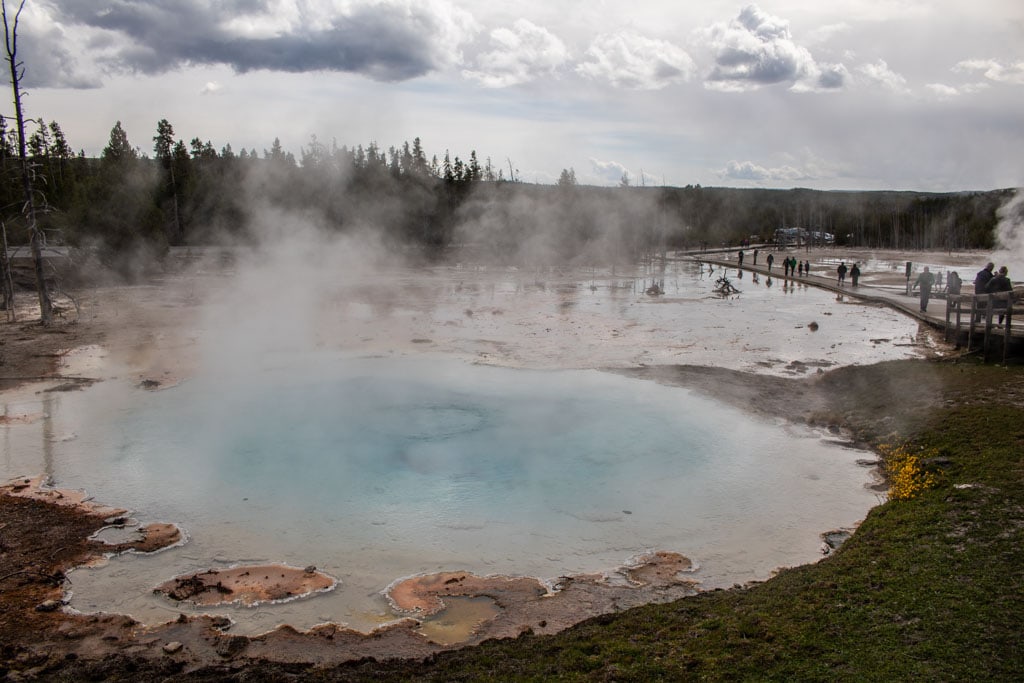
Yellowstone National Park Hot Springs You Shouldn’t Miss
There are numerous stunning hot springs in the national park, but below are some you really shouldn’t miss (and where to find them). It may seems like a long checklist, but they’re essentially clusters of hot springs accessible via their respective basin boardwalks.
- Morning Glory Pool (Upper Geyser Basin)
- Crested Pool (Upper Geyser Basin)
- Punch Bowl Spring (Upper Geyser Basin)
- Beauty Pool (Upper Geyser Basin)
- Emerald Pool (Black Sand Basin, part of Upper Geyser Basin)
- Sapphire Pool (Biscuit Basin, part of Upper Geyser Basin)
- Grand Prismatic Spring (Midway Geyser Basin)
- Turquoise Pool (Midway Geyser Basin)
- Fountain Paint Pot (Lower Geyser Basin)
- Cistern Spring (Back Basin, part of Norris Geyser Basin)
- Emerald Spring (Back Basin, part of Norris Geyser Basin)
- Porcelain Springs (Porcelain Basin, part of Norris Geyser Basin)
- Abyss Pool (West Thumb Geyser Basin)
- Black Pool (West Thumb Geyser Basin)
- Blue Funnel Spring (West Thumb Geyser Basin)
- Fishing Cone (West Thumb Geyser Basin)


Additionally, there’s also another amazing area of Yellowstone National Park that has its own collection of extraordinary hot springs. These are unlike any other hydrothermal features in Yellowstone.
At Mammoth Hot Springs, in the northwestern corner of the park, you can see impressive travertine terraces, created by millennia of mineral deposits from hot spring water.
Boardwalks loop through this spectacular place, allowing you to see the terraces, colorful springs and other geological formations from up-close. Highlights include Palette Spring, Minerva Terrace, Jupiter Terrace and Canary Spring. This is an absolute must-visit place in the park.
2. Geysers

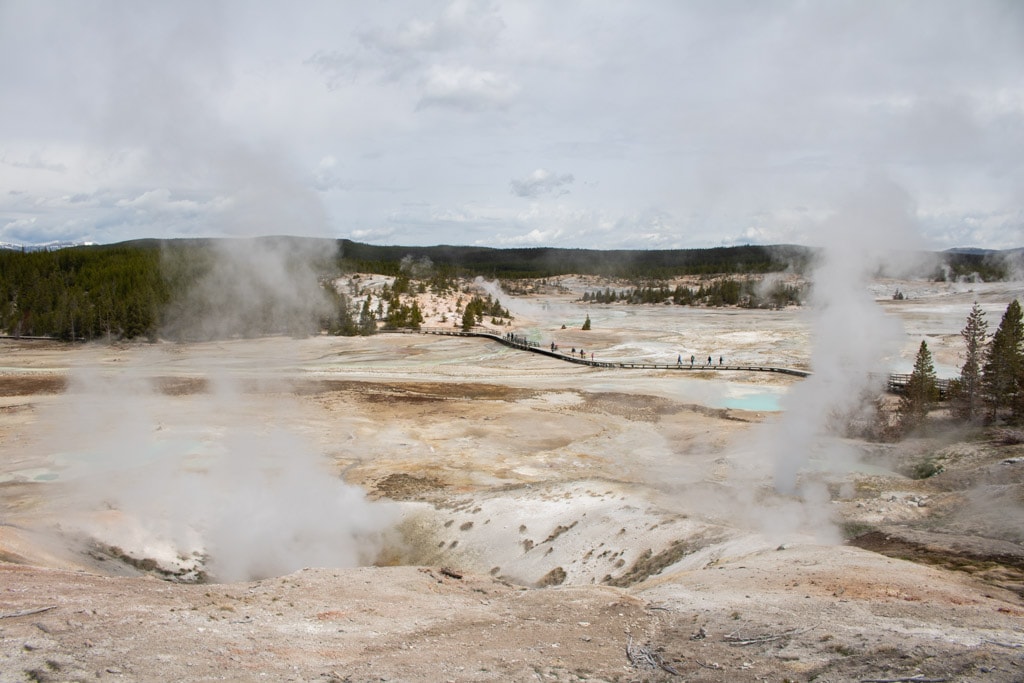
Arguably the most famous attractions in Yellowstone National Park are its geyser basins. These hydrothermal wonders were the very reason U.S. Congress created Yellowstone National Park in 1872, the world’s first national park.
There are over 10,000 hydrothermal features in Yellowstone National Park, a truly mindboggling number. This includes the largest concentration of geysers on Earth, as well as mud pots, fumaroles and the hot springs described above.
The spread-out locations of the geyser basins of Yellowstone are the clearest sign that there’s a gigantic supervolcano located below.
These basins include the world’s tallest geyser—Steamboat Geyser—and the most famous geyser on the planet—Old Faithful—along with hundreds of others, many of which are accessible and visible from trails and boardwalks.
The most famous geyser basin in Yellowstone is, without question, the Upper Geyser Basin. Home to Old Faithful, this is also where you’ll find four other geysers with predicted eruption times—Castle, Daisy, Grand and Riverside—along with hundreds of other hydrothermal features.
In fact, the majority of geysers in the world are located in this very geyser basin. Incredible!
Other geyser basins you should not miss are Norris Geyser Basin, which is the hottest in the park, the Midway and Lower Geyser Basins, and West Thumb Geyser Basin on the shore of Yellowstone Lake.
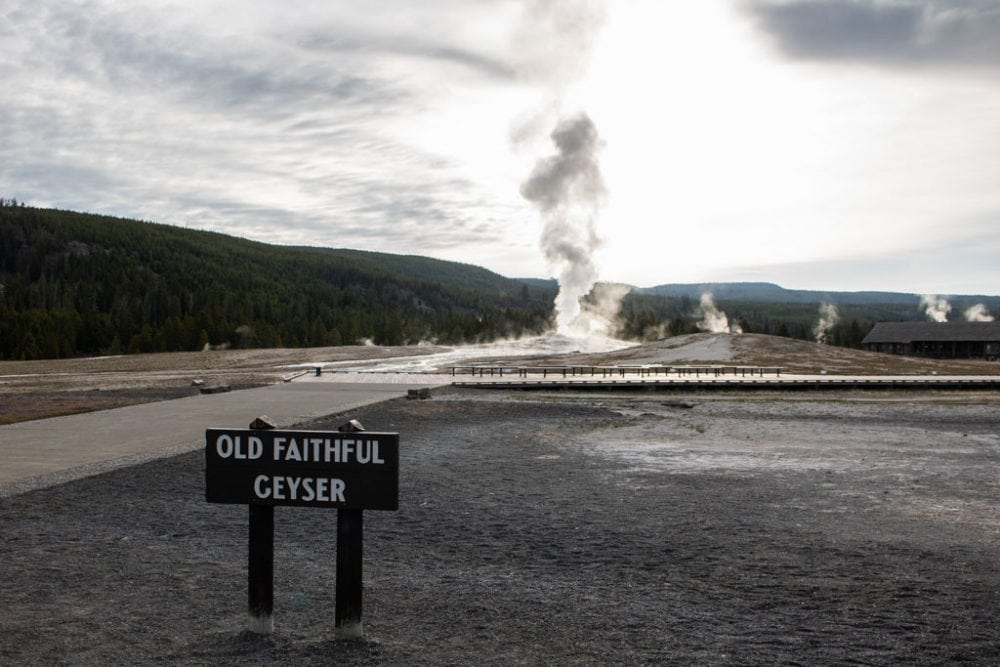
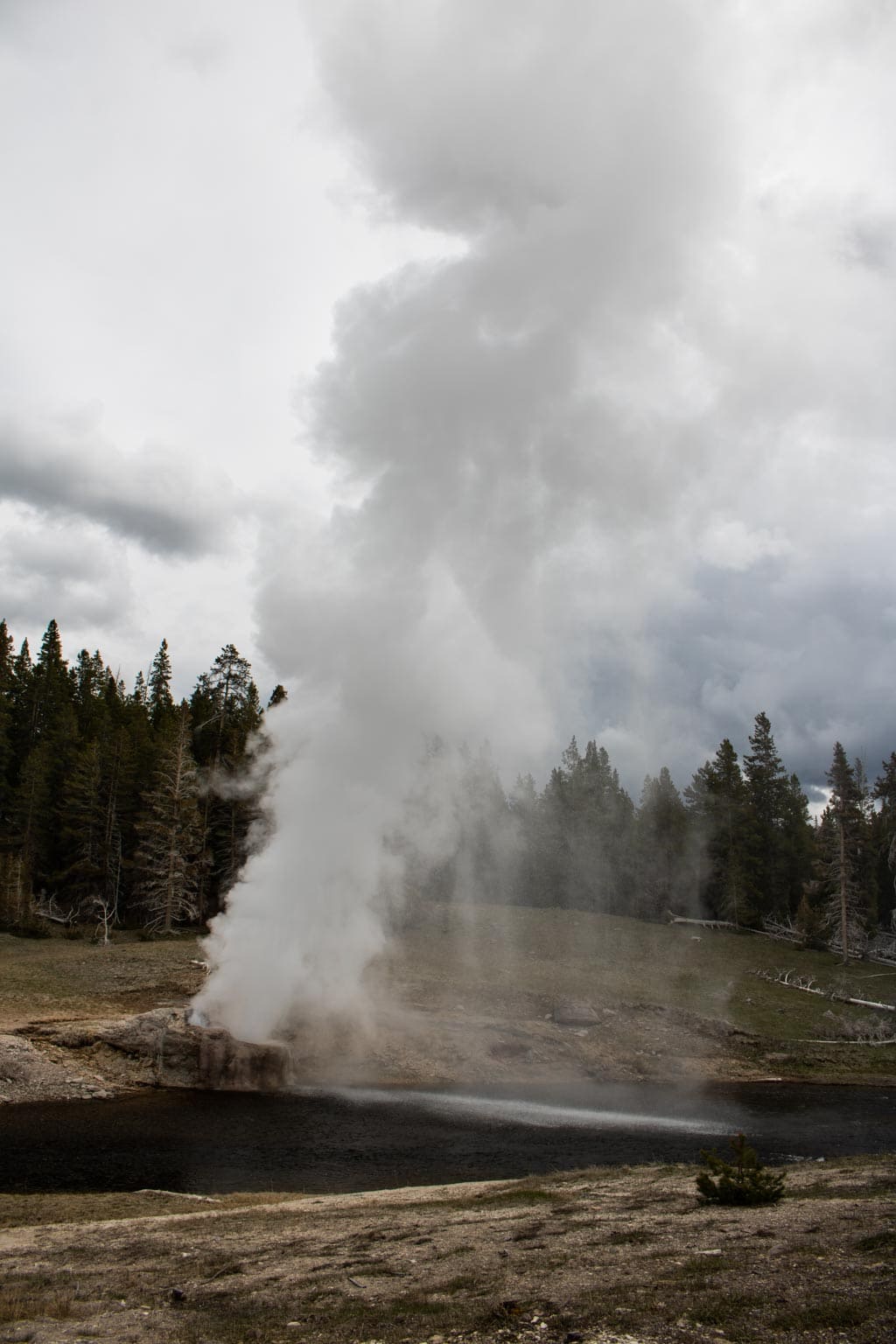
Overview of Geyser Basins in Yellowstone National Park
These are the main geyser basins in Yellowstone National Park, with some of their main features, including both hot springs and geysers:
- Norris Geyser Basin: Crackling Lake, Porcelain Springs, Emerald Spring, Cistern Spring, Echinus Geyser and Steamboat Geyser
- Lower Geyser Basin: Fountain Paint Pot, Great Fountain Geyser and White Dome Geyser
- Midway Geyser Basin: Excelsior Geyser Crater, Turquoise Pool and Grand Prismatic Spring
- Upper Geyser Basin: Old Faithful, Castle Geyser, Riverside Geyser, Grand Geyser, Castle Geyser, Crested Pool, Morning Glory Pool, Sapphire Pool, Emerald Pool, Beauty Pool and Punch Bowl Spring
- West Thumb Geyser Basin: Abyss Pool, Black Pool, Blue Funnel Spring and Fishing Cone
Smaller hydrothermal areas in Yellowstone National Park that also have fascinating features are the following:
- Monument Geyser Basin
- Artist Paintpots
- Mud Volcano
3. Wildlife

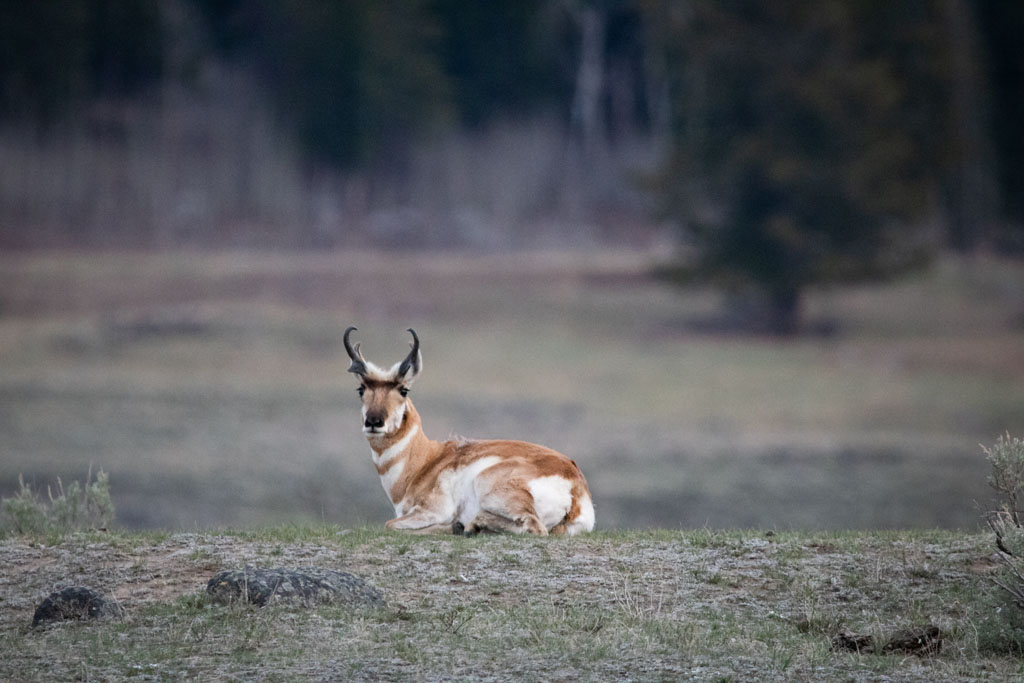
Besides watching geysers erupt and hot springs bubble, many people also visit Yellowstone National Park to see North America’s most iconic animals. This is, after all, one of the greatest national parks for wildlife watching.
The diverse and abundance wildlife in Yellowstone is just as famous as its hydrothermal features. In addition to almost 300 bird species and 16 species of fish, the park is home to 67 mammal species, the highest concentration of mammals in the contiguous United States.
Yellowstone National Park is the only place in the United States where American bison have lived continuously since prehistoric times. Nowadays, the park harbors some of the largest herds of wild bison and elk in the country.
Five other native ungulate species also thrive here—moose, bighorn sheep, pronghorn, mule deer and white-tailed deer.
As far as predators go, Yellowstone is a an absolute paradise. Large populations of black bears and grizzly bears live in the park, while this is arguably the best place in the whole world to see gray wolves in the wild.

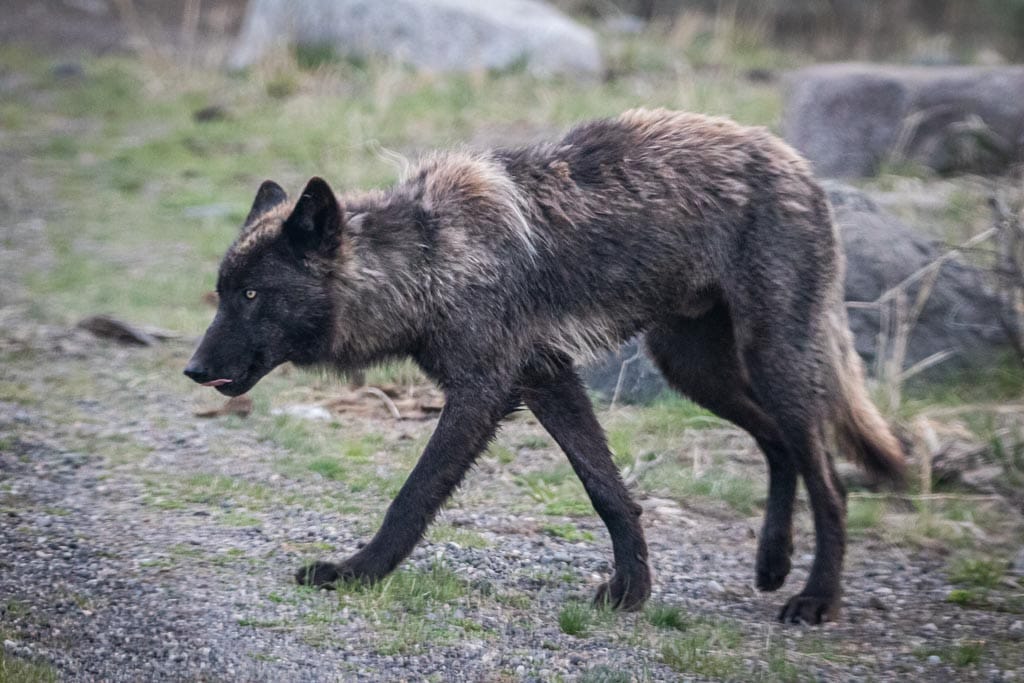
Visitors might also spot coyotes, red foxes, mountain lions or Canada lynx. Wolverines call the park home, too, but rarely seen.
Smaller mammals that are regularly spotted include American pikas, river otters, long-tailed weasels, golden-mantled ground squirrels and yellow-bellied marmots.
Entire books have been written about the wildlife in Yellowstone National Park, so I don’t have nearly enough space to elaborate on this here.
Let me also just say that the park is an excellent place for bird watching as well. High-profile birds include bald eagles, osprey, trumpeter swans, American white pelicans, sandhill cranes, common loons and owls.
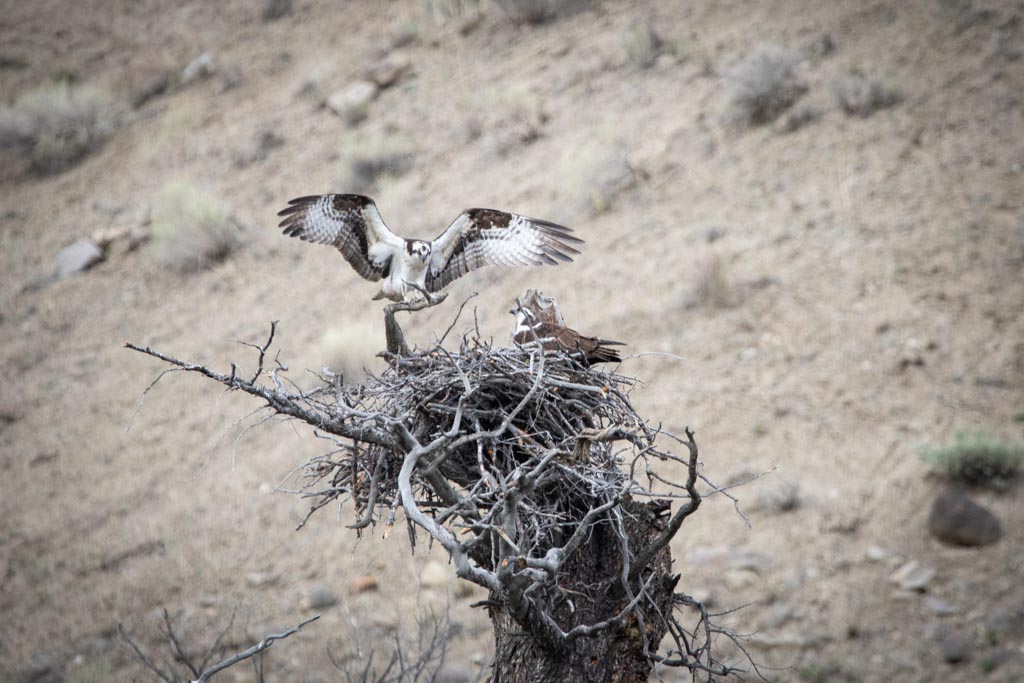
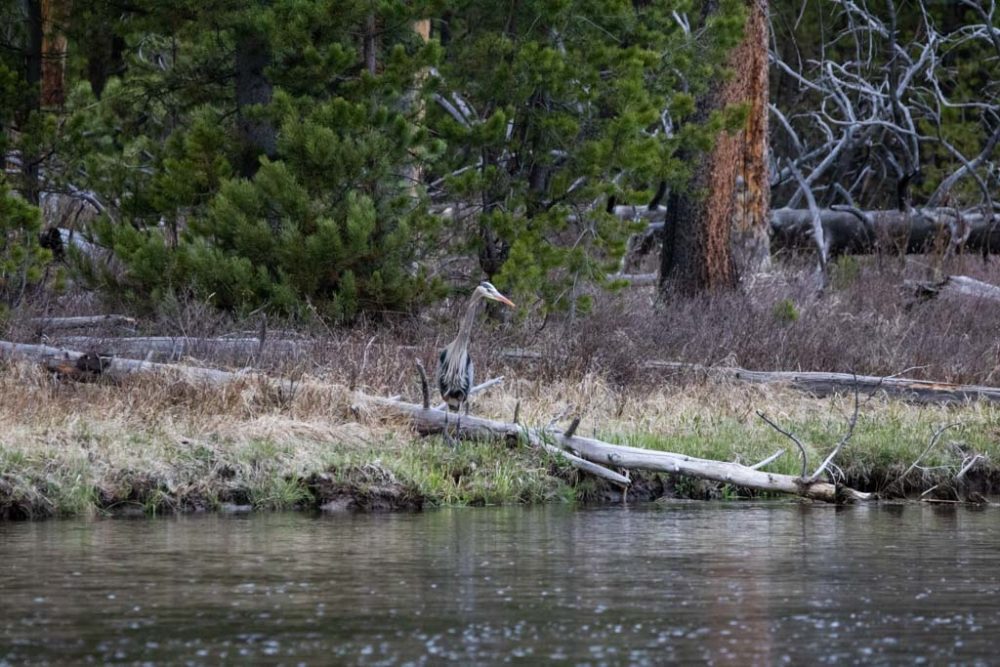
Best Places to See Wildlife in Yellowstone National Park
You can see wild animals literally everywhere in Yellowstone National Park. From roadside meadows and mountain slopes to boardwalks, hiking trails and even around hotels and cabins, wildlife abounds here.
Some places, however, are better than others for all-round wildlife viewing opportunities. Based on my own time spent in the park, I’d recommend going to the places below. Especially the Lamar Valley in the Northern Range of Yellowstone is a wildlife haven, also known as the “Serengeti of North America.”
- Mammoth Hot Springs: bison, elk, mule deer, black bears, grizzly bears
- North Entrance Area: bison, elk, pronghorn, bighorn sheep, osprey
- Blacktail Plateau: bighorn sheep, pronghorn, black bears, grizzly bears
- Lamar Valley: bison, bighorn sheep, elk, mule deer, pronghorn, black bears, grizzly bears, coyotes, gray wolves
- Hayden Valley: bison, elk, moose, bald eagles, trumpeter swans, black bears, grizzly bears, gray wolves
4. Rivers, Lakes and Waterfalls
Perhaps one of the less-known features of Yellowstone National Park are its many rivers, streams and waterfalls. Yet, as shown by the myriad hot springs and geysers, water plays a vital role in the Greater Yellowstone Ecosystem.
About 5% of this enormous park’s surface area is water, much of which is taken up by massive Yellowstone Lake.
Rivers of Yellowstone National Park

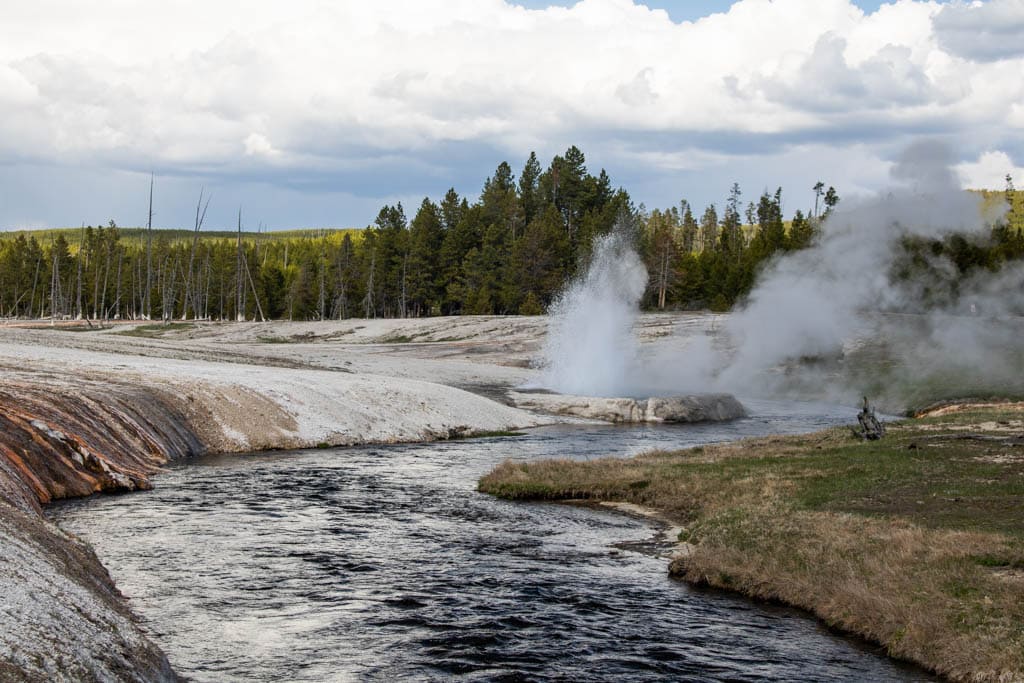
Moreover, the waters of Yellowstone are a “vital national resource” according to the National Park Service. Greater Yellowstone is home to the headwaters of no fewer than seven great rivers, which flow from the Continental Divide to the Gulfs of California and Mexico and the Pacific.
Rivers are an essential part of life in Yellowstone National Park, supporting a wild range of flora and fauna.
From cutthroat trout, Arctic grayling and mountain whitefish to salamanders and frogs to bald eagles, ducks, American dippers and river otters, the rivers and streams of Yellowstone are great places to see wildlife.
There are some 1,000 rivers and streams in Yellowstone National Park, together making up about 2,500 miles of running water. Additionally, there are literally thousands of small wetlands, too, often located along streams.
The most famous river in the park is, of course, the Yellowstone River itself. With its length of 671 miles, it’s the longest undammed river in the contiguous United States.
The river flows into Yellowstone Lake from the southeast before exiting the lake at its northern end. It then flows north-northwest toward Gardiner, on its way carving out the spectacular Grand Canyon of the Yellowstone.
Other major rivers in Yellowstone National Park are the Gardner River, the Snake River, the Lamar River, the Gibbon River and the Firehole River. The latter two converge to form the Madison River in the west of the park.
Thanks to those pristine rivers and abundant fish, Yellowstone is a fly-fishing paradise.
Lakes of Yellowstone National Park
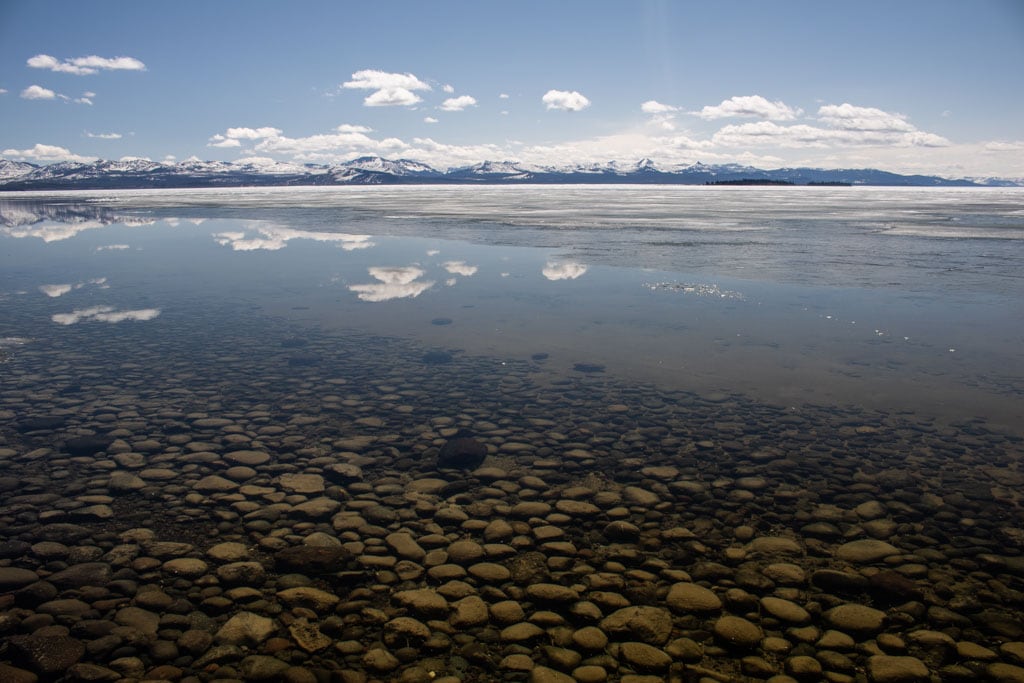
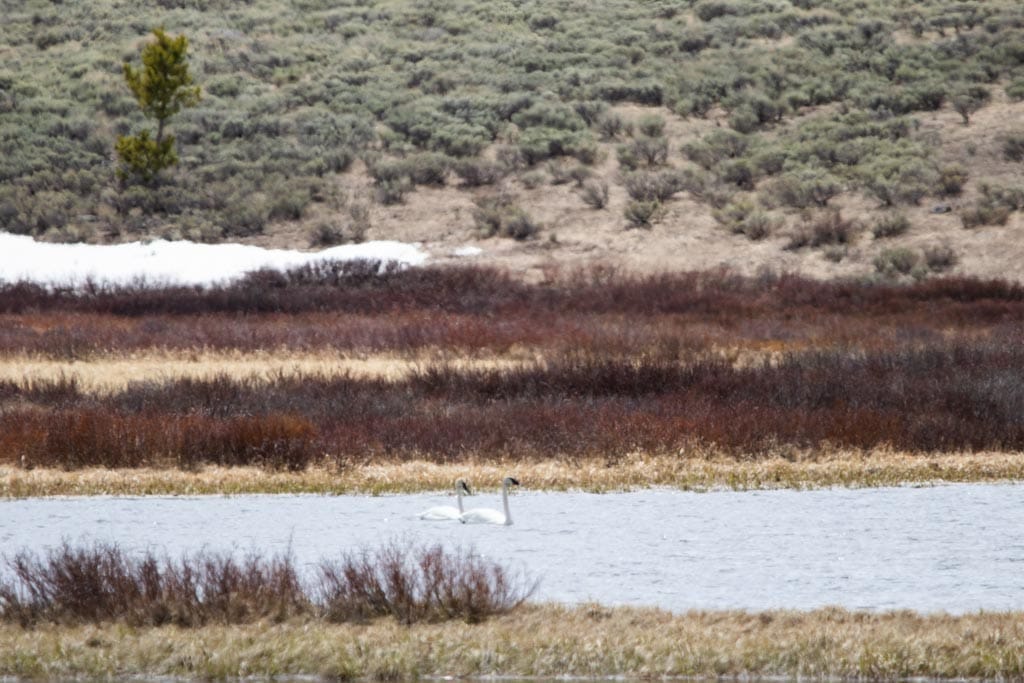
Of the 150 named lakes in Yellowstone National Park, Yellowstone Lake is undoubtedly the most famous. Situated more than 7,000 feet above sea level, covering up to 139 square miles and with a 141-mile shoreline, it’s North America’s largest high-elevation lake.
Fourteen tributaries, but only one river, the Yellowstone River, feed Yellowstone Lake. It’s only outlet is at Fishing Bridge, where the Yellowstone River leaves the lake, flows through Hayden Valley and the Grand Canyon of the Yellowstone.
The lake offers amazing boating and fishing opportunities, but can also be quite dangerous during bad weather. Its West Thumb area features a fascinating collection of lakeshore hot springs.
Other large lakes in Yellowstone National Park are Heart Lake and Lewis and Shoshone Lakes. Lewis Lake is accessible by car via the road between West Thumb and the South Entrance.
The other two lakes, on the other hand, are in the park’s wild backcountry and only reachable on foot or, in case of Shoshone Lake, by boat via the Lewis River Channel.
Additionally, there are several smaller lakes and ponds all throughout Yellowstone National Park. Beautiful examples of those include Swan Lake and Trout Lake.
The Yellowstone National Park lakes harbor lots of the park’s wildlife. From native fish species to amphibians, a plethora of birds and several mammals, spending an afternoon on a lakeshore in Yellowstone will result in many wildlife sightings.
Watch for white pelicans, eagles, trumpeter swans, loons, moose, elk, grizzly bears and the occasional wolf.
Waterfalls of Yellowstone National Park

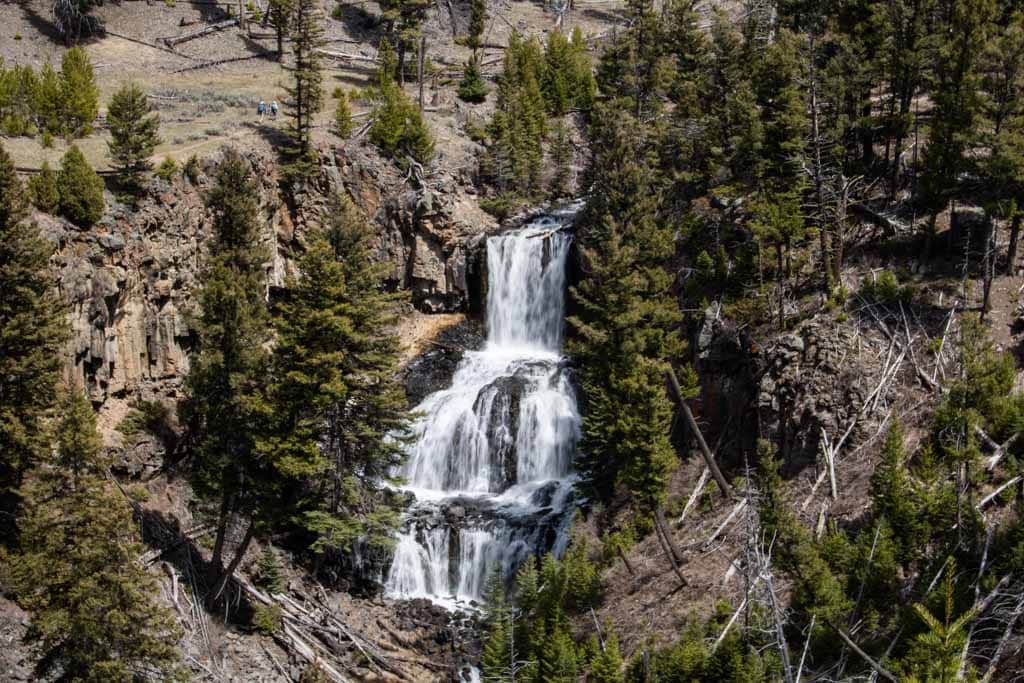
There are dozens of named frontcountry waterfalls in Yellowstone National Park, and literally hundreds of unnamed and probably even undiscovered waterfalls. Several Yellowstone waterfalls are visible from roadside viewpoints and overlooks.
This includes the iconic Lower Falls of the Yellowstone River, which drops 308 feet down into the Grand Canyon of the Yellowstone. That’s twice as high as Niagara Falls!
If you’d like to see some waterfalls during your Yellowstone visit, in my opinion one of the most underrated features of Yellowstone National Park, put Gibbon Falls, Kepler Cascades, Firehole Falls, Tower Fall, Rustic Falls and Undine Falls on your list. You can see all of those from the roadside.
For a nice waterfall hike, consider hiking to Wraith Falls (1 mile roundtrip) or Fairy Falls (5.4 or 6.7 miles roundtrip).
5. Historic Architecture

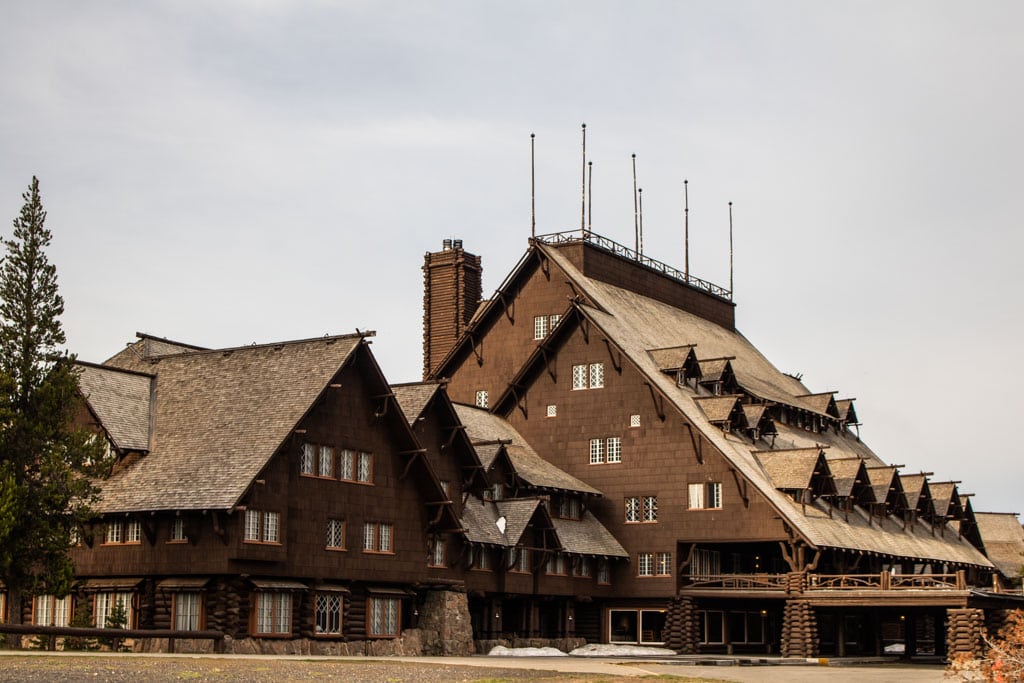
As the first national park in the United States, and the world, Yellowstone is home to a wealth of historic architecture. There are several historic districts, historic structures and cultural landscapes in the park. All contribute to the intrinsic and inherent value of Yellowstone.
In fact, according to the park’s website, “the majority of Yellowstone’s hotels, lodges, general stores, residences, maintenance shops, and offices are listed on or eligible for listing on the National Register of Historic Places.”
Among the greatest examples of historic architecture in Yellowstone National Park is Fort Yellowstone (1891-1909). Part of the Mammoth Hot Springs Historic District, this historic army fort is the headquarters for the national park.
In Yellowstone, you’ll find no fewer than five buildings that exemplify the so-called “National Park Service rustic” architectural style. Those are the Northeast Entrance Station (1935), the Madison, Norris and Fishing Bridge museums (1929-1932), and the magnificent Old Faithful Inn (1904).
The famed Lake Yellowstone Hotel (1891), located on the northwest shore of Yellowstone Lake, is the oldest still-operating hotel in Yellowstone National Park
Other significant historic buildings in Yellowstone worth seeing/visiting are the iconic Roosevelt Arch (1903) in Gardiner and the Lamar Buffalo Ranch (1915-1938), the “birthplace of wildlife conservation in America.”
The Queen’s Laundry Bathhouse (1881), situated in the Lower Geyser Basin and miles away from any other building, is the oldest structure built by the U.S. government for public use in a national park.
Also in Mammoth Hot Springs, the Mammoth Post Office (1938) is arguably the finest historic post office in any national park.
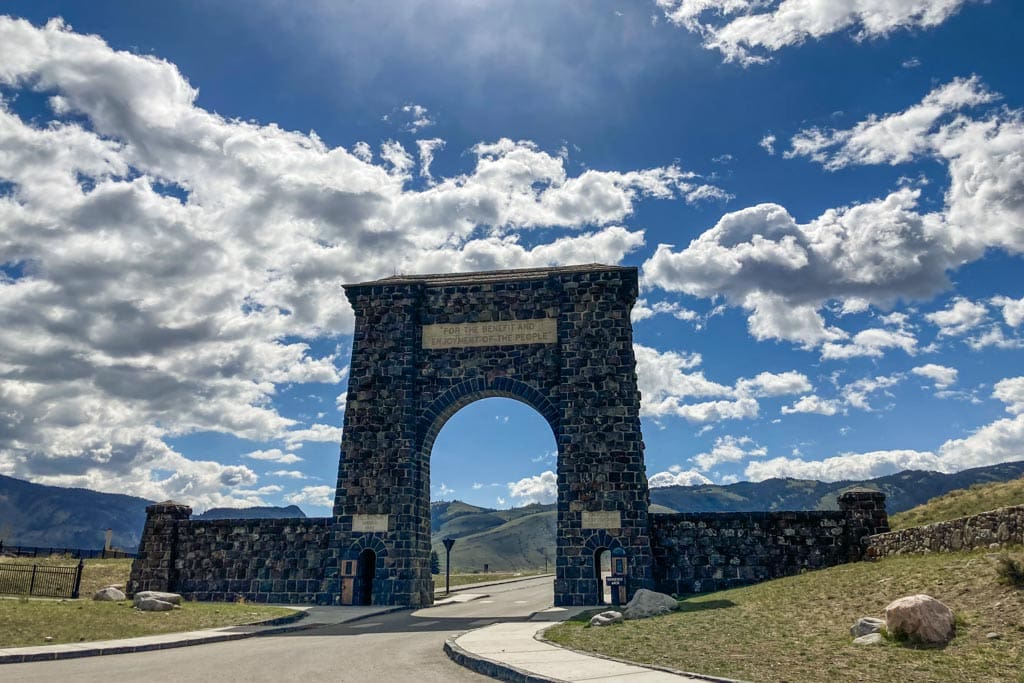
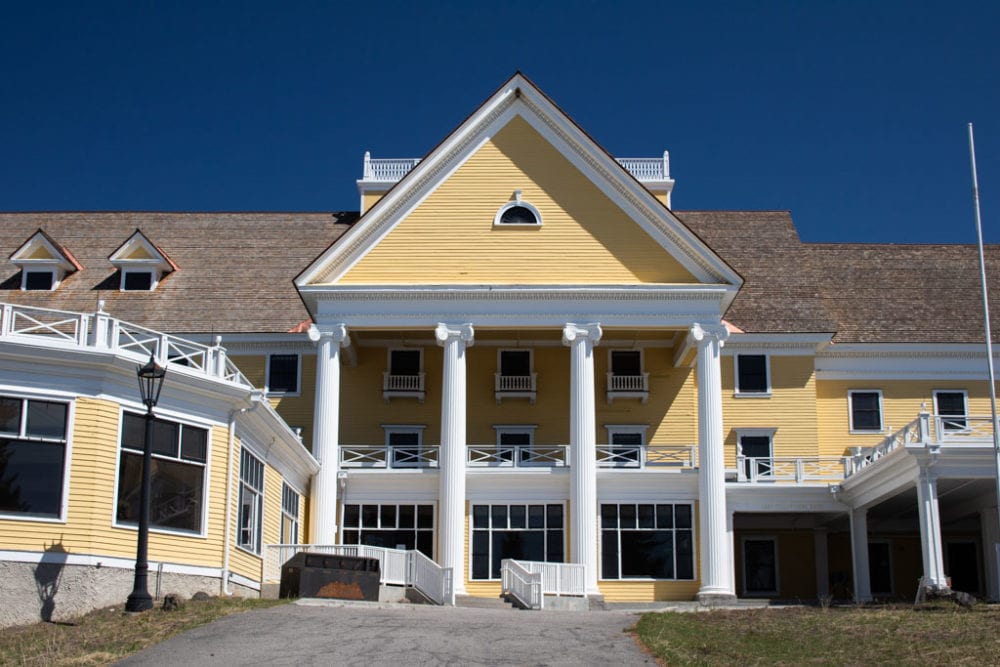
Find Accommodation in Yellowstone Here
Other Amazing Features of Yellowstone National Park
There’s even more to Yellowstone National Park than hot springs, geysers, wildlife, rivers, lakes and waterfalls, and architecture.
The park’s features also include spectacular mountain ranges and peaks, beautiful valleys and high-elevation plateaus. Additionally, forests are also a major part of the Yellowstone landscape.
- Majestic mountain ranges
- Gallatin Range (northwest)
- Washburn Range (north center)
- Absaroka Range (east)
- Red Mountains (south center)
- Scenic valleys
- Hayden Valley (center)
- Lamar Valley (northeast)
- Pelican Valley (east)
- Plateaus
- Blacktail Plateau (north)
- Central Plateau (center)
- Madison Plateau (southwest)
- Pitchstone Plateau (southwest)
Recommended Books About Yellowstone National Park
- Yellowstone and Grand Teton National Parks (Full-Color Travel Guide) – Fodor’s Compass Guides
- Hiking Grand Teton National Park: A Guide to the Park’s Greatest Hiking Adventures – Falcon Guides
- Hiking Yellowstone National Park: A Guide To More Than 100 Great Hikes – Falcon Guides
- Empire of Shadows: The Epic Story of Yellowstone – George Black
- Deep Into Yellowstone: A Year’s Immersion in Grandeur & Controversy – Rick Lamplugh
- Yellowstone Ranger: Stories from a Life in Yellowstone – Jerry Mernin
- Decade of the Wolf: Returning the Wild to Yellowstone – Douglas Smith & Gary Ferguson
- The Reign of Wolf 21: The Saga of Yellowstone’s Legendary Druid Pack – Rick McIntyre
- Wild Rescues: A Paramedic’s Extreme Adventures in Yosemite, Yellowstone and Grand Teton – Kevin Grange
- Bring Jade Home: The True Story of a Dog Lost in Yellowstone and the People Who Searched for Her – Michelle Caffrey
- Taken by Bear in Yellowstone: More Than a Century of Harrowing Encounters between Grizzlies and Humans – Kathleen Snow
- Death in Yellowstone: Accidents and Foolhardiness in the First National Park – Lee H. Whittlesey
Wildlife Safety in Yellowstone National Park
Wildlife is one of the top features of Yellowstone National Park. Seeing bison, grizzlies and wolves in the wild is an unforgettable experience.
In order to keep yourself and the animals safe while visiting Yellowstone, however, it’s important to follow some basic guidelines and regulations.
These really aren’t difficult to understand, yet people ignore them every year and get seriously hurt or even die from wildlife encounters.
- Stay at least 100 yards away from bears and wolves, and minimum 25 yards from all other wildlife.
- Never approach a wild animal.
- Use binoculars, a spotting scope or telephoto lens to observe and/or photograph animals.
- Always carry bear spray!
- If your presence causes an animal to move or react, you’re too close. Move away.
- Park in roadside pullouts to watch wildlife. Always make sure all wheels are completely off the road.
For more information about wildlife safety in Yellowstone, I’d like to refer to the following safety guides.

